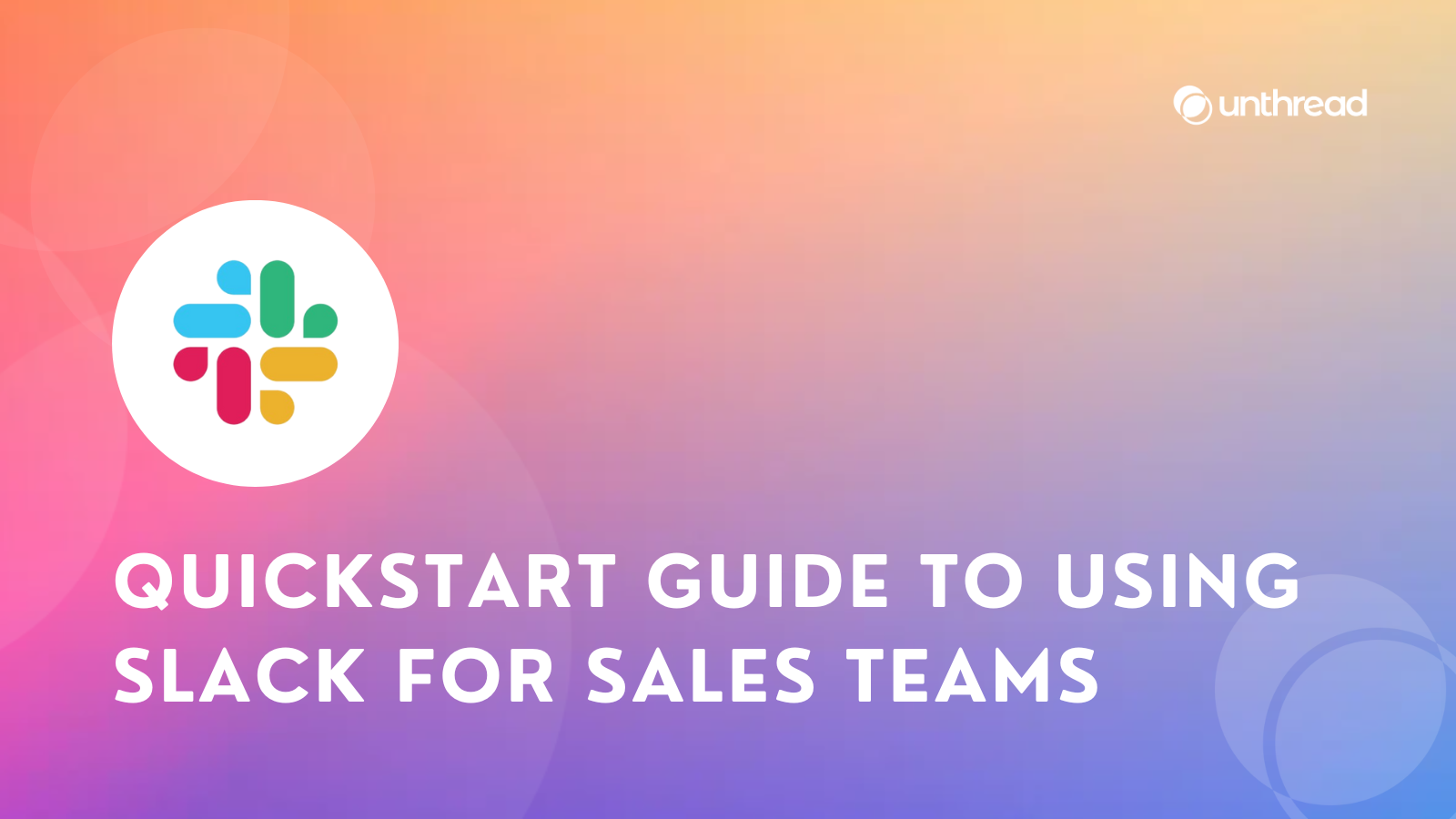Quickstart Guide to Using Slack for Sales Teams

There are over 200,000 companies that use Slack for instant communication. As of 2019, over 51% of employees prefer chat apps like Slack and Teams over email.
In June 2020, Slack launched Slack Connect, a powerful way for companies to collaborate with each other in real-time. Currently, over 80% of Fortune 500 companies use Slack Connect to talk with partners, customers, vendors, and more.
With your stakeholders and champions checking Slack 10x more often than email, Slack channels serve as the most direct and reliable way to communicate with customer and prospects.
The Benefits of Using Slack vs. Email
⏱ Faster response times
People are >60% more likely to respond and respond >80% faster to messages that come into Slack when compared to email. For a full report on responsiveness of Slack vs. email, subscribe above to get access to our publication.
💬 Transparency across stakeholders
Rather than a series of different email chains with changing cc and bccs, you can add your relevant stakeholders to a single channel. Context is now visible to everyone and there's no gap in information between team members.
🤝 Dynamic messages and improved collaboration
While emails are inherently static, Slack messages can be dynamic and update in real-time. You can easily upload a file, share a code snippet, and start a video call all from a single message. This is even more powerful when you integrations like Dropbox, Zoom, Figma, and more that let you share content directly without downloading & re-uploading files.
🔒 Improved security
Slack reduces the risk of phishing and other cyber attacks by verifying the sender and receiver of each message. Emails can be subject to spoofing and put you at risk of sharing confidential information with a hacker.
🤖 Automation
Slack has a rich ecosystem of over 2,000 apps & integrations that add new automations to your conversations. For example, you can find apps that route new inbound sales inquiries to an on-call rotation as well sync all conversations with your CRM.
Best Practices for Slack
Get customer buy-in
Companies are naturally protective of their Slack environment, and you'll want to get verbal consent before you set up a shared channel. There are a few other tips & tricks to ensure your Slack channels get accepted by prospective customers.
Keep it casual
There's no need for a "Dear so-and-so", or "To whom it may concern" when talking to customers in Slack. Slack is a chat interface, and you should be talking to customers in a chatting context (though still keep it professional!)
Get to the point
People can sometimes be juggling hundreds of Slack channels at a given time, and it's important that they can easily navigate through the noise. Keep your messages poignant with the most important content in your first sentence.
Respond quickly
Slack can be a double-edged sword. While you'll see higher engagement from customers, there is also a higher expectation of quick response times. To prevent messages from getting lost, implement Service Level Agreements (or SLAs) that guarantee response times, and stick to them. The best way to stick to these is to use an app like Unthread for assigning messages and alerting if you take too long to provide customer responses.
Conclusion
Slack is a great new way to reach customers in real-time on the app that they use most often. If you get proper buy-in from prospects to start communicating on Slack, you'll enjoy higher engagement, faster response times, and ultimately a higher close rate than if you were stuck in a static email inbox.

